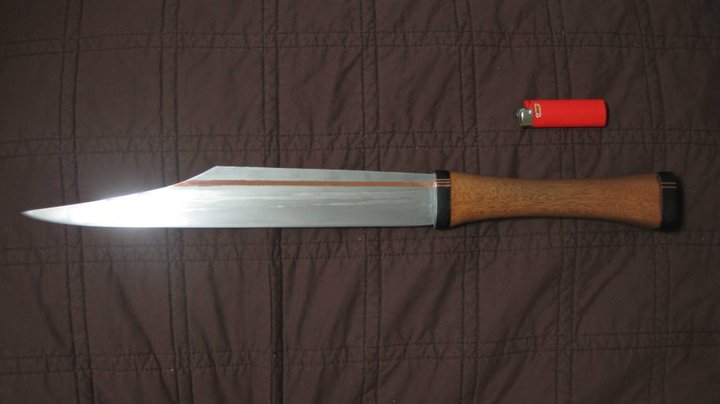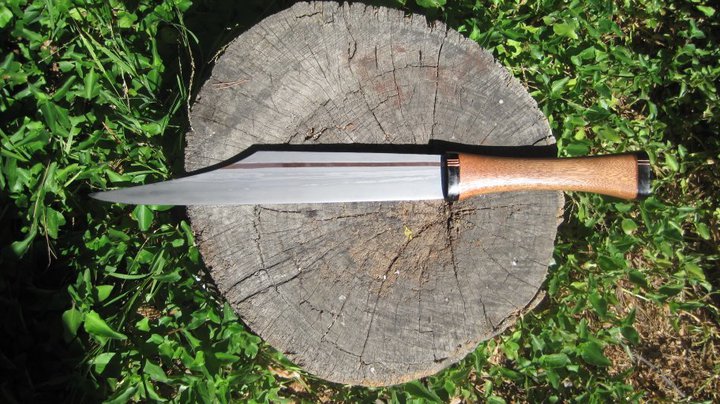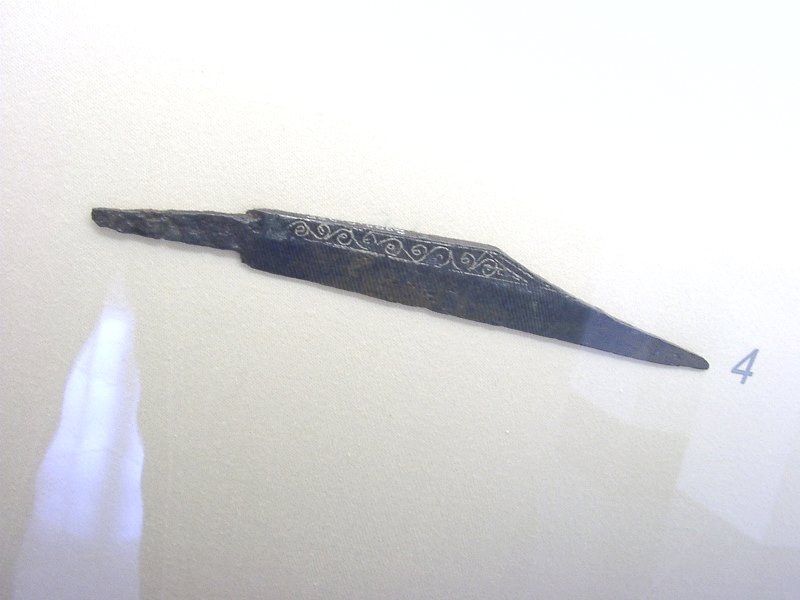22.5" overall
14.5" blade
1/4" thick at base of blade
forged steel ("Aldo's" 1084) blade with visible quench line(s)
Mahogany handle
Water Buffalo bolster & end-cap
Copper inlay in blade & fittings
Copper pins in end-cap
Blade & handle were hand-rubbed up to 2000 grit. Blade was then *very lightly* etched and rubbed to bring out the quench line.
[ Linked Image ]
[ Linked Image ]
[ Linked Image ]
[ Linked Image ]
This is the first time i've attempted inlay in either steel or horn, and i'm relatively happy with how it came out. There are a few noticeable flaws in the blade inlay, where i put a few deep scratches into the blade along the inlay channel, but I feel confident in my abilities to minimize this sort of thing in my next attempt.
Concerning the blade shape: I'm quite happy with the base-to-broken-back "reverse" taper (which is lacking in many repro ductions i'v seen). Furthermore, I'm happy that I was able to avoid the point droop (which results in a tiny amount of recurve) i see in a lot of reproduction oil-quenched seax, but have never seen in any historical examples. However, next time I attempt to reproduce this style of seax, I'd like to include a more distinct curved belly, as seen in most historical pieces of this type.
Although broken back seax with such exaggerated taper to the point are not the norm, there are extant examples:
[ Linked Image ]
Thanks,
Dustin


a lighter for scale


